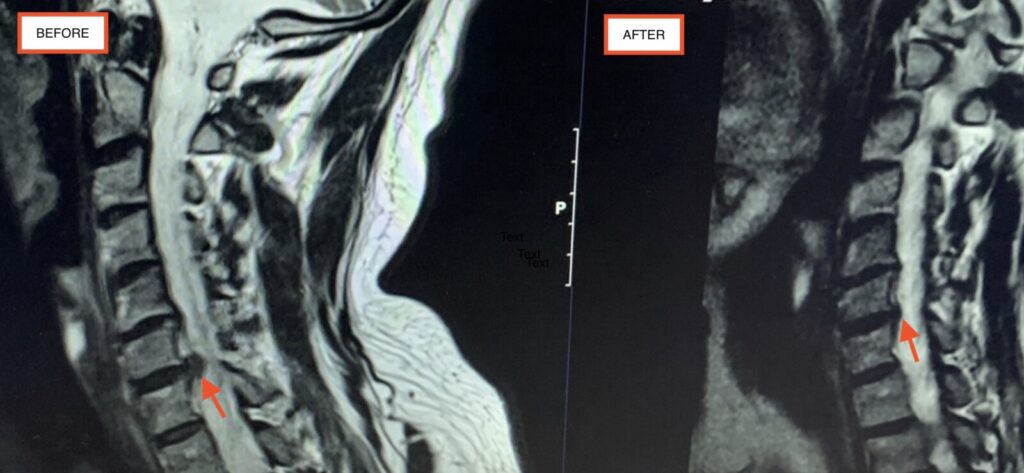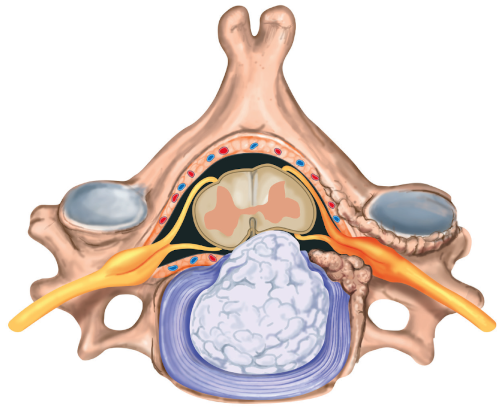In this post we discuss golf, herniated discs, and how resistance training can be used to get you back on the golf course.

We’ve all seen the before and after pictures that are used to sell gym memberships and personal training.
Usually by the second photo the person has gained a sun tan and is inexplicably covered in baby oil.
Above is a before and after photo of a different sort.
The images belong to an amateur golfer in his late 40s who came to me with nerve pain down his arm and into his fingers.
The first image, which was taken at the time, shows a herniated disc in his cervical spine clearly pushing out into the spinal canal.
At the time the pain was acute enough to impact his sleep. Golf was obviously out of the question.
What is a disc herniation?
This type of injury is often described as a slipped disc, which is both inaccurate and unhelpful.
Spinal discs do not slip. They are stable structures which are firmly attached to the vertebrae above and below them.
It’s more accurate to think of a herniation as a tear or a rupture of the thick fibrous outer casing of the disc.

This allows the gel like substance that fills the centre of the disc to leak out into the spinal canal which may impact passing nerves.
Hence the radiating pain into the limbs those nerves serve.
Rebuilding strength after disc herniations
In this case of this particular golfer, we began by carefully rebuilding strength in the muscles that support the neck. As well as those of the affected shoulder and arm.
We also addressed limitations in his trunk and hips.
After a few weeks he was able to return to the golf course, practicing some gentle hitting and his short game.
Within 3 months he had played his first round of 18 without significant discomfort.
So far so good.
Recently he went back for a second scan to check how everything was looking.
Whilst he had returned to his full golf schedule, he was occasionally experiencing nerve like sensations in his arm. Particularly when playing back to back rounds.
This isn’t unusual as damaged nerves can take months to heal.
As you can see from the image above, the second scan showed the disc had healed well and no intervention was indicated.
Resistance training will get you back on the golf course
I’m not responsible for healing spinal discs. Your body takes care of that.
What I can help with is improving your body’s ability to tolerate the forces you’re placing on it. Either through your day to day activities or your sport.
Looked at a different way, the images show a cervical spine that was unable to sustain the forces being applied to it. And one that now can.
It seems improbable that this client would’ve been able to return to playing golf on a regular basis without focused resistance training.
If he had done, I doubt whether his cervical spine would’ve looked this good 12 months after the original issue.
Summary
If your muscular system isn’t strong enough to control the forces your activities place on it, you’ll experience issues.
This can impact structures such as spinal discs.
Even in the presence of such an injury, careful loading of the muscular system can take place.
This may reduce your symptoms in the short term, and in the long term get you back doing the things you love without pain.